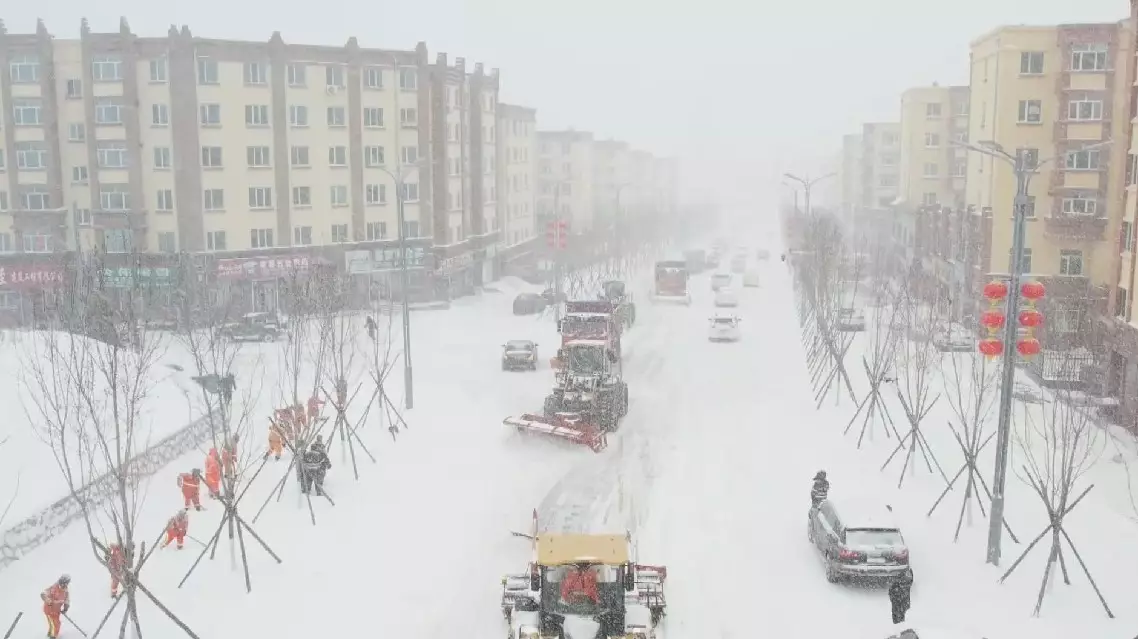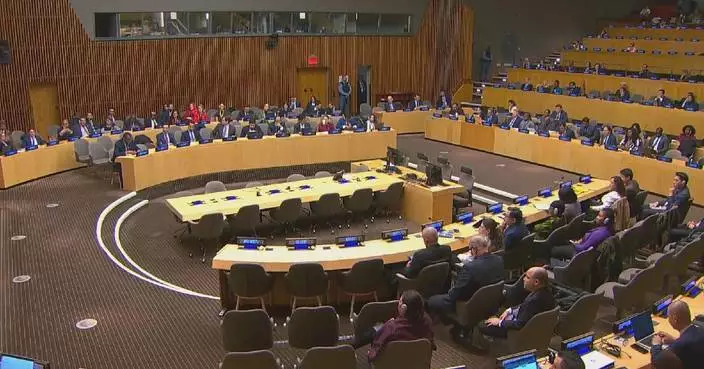The National Meteorological Center lifted a warning for cold waves and heavy snows on Wednesday, with temperatures expected to pick up in most parts of central and eastern China but forecast a lingering strong snowfall and sharp temperature drop in Inner Mongolia and Heilongjiang in the north and northeast in the following two days.
A major cold wave has swept a large swathe of north China and parts of the country's eastern region since Sunday, with many cities reporting snow or rain, and temperature drops. It is the first major cold wave to many of these regions. As of 08:00 Wednesday morning, a total of 90 highway sections in Heilongjiang, Jilin and Liaoning in the northeast, Shanxi, Hebei and Inner Mongolia in the north, Gansu in the northwest, Guizhou and Sichuan in the southwest, and Shandong in the east were closed due to snowfall and icy roads.
A snowstorm started to hit Hegang City, Heilongjiang Province on Monday, leaving a maximum accumulated snow depth of 39 centimeters, and forcing the suspension of all railways, highways, construction projects, sports venues and schools across the city from Tuesday.
From 20:00 Monday to 20:00 Tuesday, the precipitation at a meteorological station was 54.6 mm, far exceeding the 24-hour historical record of 37.0 mm from November 11 to 12, 2012.
A heavy snow also blanketed Tongliao City of Inner Mongolia from Sunday to Tuesday, bringing the largest snowfall of more than 10 mm and a temperatures drop by eight to ten degrees Celsius.
Meanwhile, northern parts of Shanxi Province ushered in a snow from Tuesday afternoon. In order to ensure the safety of high-speed traffic, some highway sections were temporarily closed.
The Chinese capital city of Beijing also welcomed its first snow this winter on Tuesday night with snowflakes drifting in the air and covering the ground in white soon.
The city kept its blue alert for cold waves in place on Wednesday which it issued on Sunday.
China has a three-tier, color-coded weather warning system for cold waves, with orange representing the most severe weather, followed by yellow and blue.

Parts of China experience wide scope of cold waves, heavy snows









